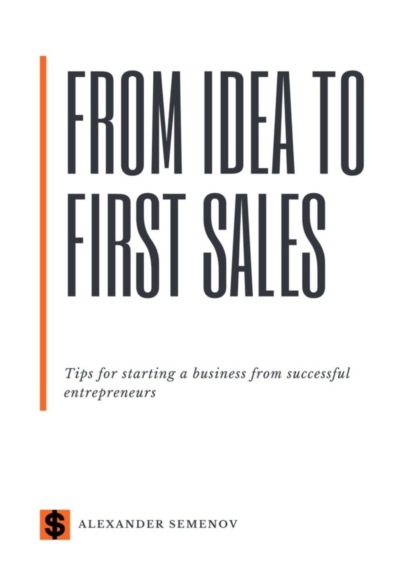По всем вопросам обращайтесь на: info@litportal.ru
(©) 2003-2024.
✖
From idea to first sales. Tips for starting a business from successful entrepreneurs
Автор
Год написания книги
2021
Настройки чтения
Размер шрифта
Высота строк
Поля
– fix all the meanings
– say, «thank you» to everyone who participated in this discussion
External factors and their impact on the business model
Even the best ideas are broken down by reality, even if you have drawn the business model very accurately and clearly, attracted the best experts for advice, the fact is that there are still a few things to consider:
1. Consumer advice. Be attentive to the customers of other companies, because the customer always knows better how to provide him with a service or how best to deliver the goods.
2. External environment. Analyze the environment, look for trends that occur in the economy around us which industries evolve, what industries are in the stage of decline – all this important information, which will allow you time to adjust your actions and make management decisions.
As you move forward with the business model, you have already noticed that this work provides a lot of answers to your questions and helps you make an actual management decision. If you were able to get a complete picture of how your business will function, then you probably already have the answers to these questions:
– Is this my business?
– Can I raise this business or do I need partners? And where should I look for them?
– Do I really want to do business?
– What will my customers get?
– What values do I create in the world, in life, in the market?
But also many other answers. All these answers lead you to the main decision-the willingness to implement your business idea.
WHO ARE YOUR CUSTOMERS?
Classification of business types
There are 3 ways to make money in business:
1. Production:
1) own product
2) product according to the customer’s documents
3) product development for the purpose of selling technology or business
2. Trading:
1) sale of everyday products and distribution of goods of large manufacturers
2) franchise (work under the brand of the product manufacturer)
3) independent purchase of goods from the supplier
4) wholesale trade
5) selling a digital product
3. Provision of services:
1) training
2) consulting
3) preparation and execution of documents
4) representation of the client in relations with third parties
5) body care (treatment, beauty care, fitness, etc.)
6) maintenance of the territory, equipment; household services
7) transportation, logistics services, etc.
All these activities can be divided into 2 classes:
1. You are part of someone else’s big business
2. You are implementing your own entrepreneurial initiative
Task: take a pen, paper, a completed template and see what type of business your business belongs to. This will determine how you will build your future business strategy.
Features of interaction with clients in different types of business
Those of you who decide to do business selling everyday products, your business will be little different from the business of a neighboring outlet. In this case, you do not need to make any large amount of efforts to study your customers, the target audience. Those who offer you goods for sale have long done this for you. Your task in this case is to pay great attention to the location of your outlet, how customers come to your business, how they find you.
There are only three ways to get customers:
1. Point of sale – in the flow of customers, for example, the most crowded street in the city.
2. Attracting Customer Flow to Point of Sale
3. Face-to-face meetings with the client.
When we talk about the target audience, we very often mistakenly define «who is our client.» You need to know four clear characters who are in contact with our product:
1. User (the one for whom the product is made)
2. The one who pays the money. Very often, someone who pays money is not a user, for example, mom buys a toy to her son
3. The person making the purchase decision. It may well be that my mother has money, but the decision to buy a toy is made by dad.
4. The one who gives advice to the person making the purchase decision. For example, a person with whom dad consulted.
Basic Principles of Customer Development





